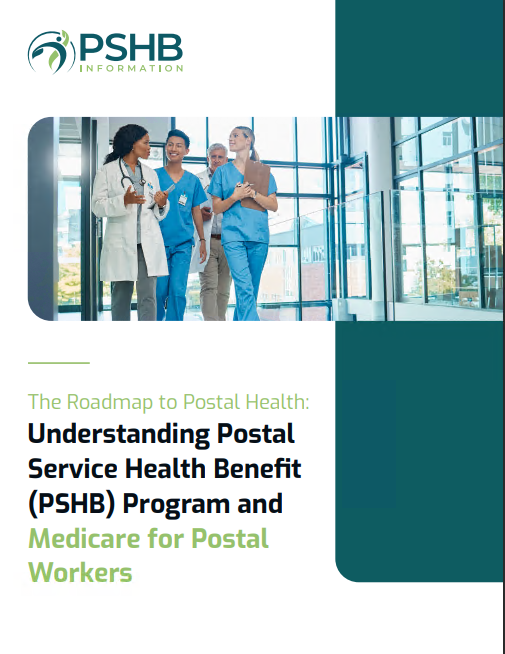Key Takeaways
-
USPS workers transitioning from FEHB to PSHB should understand how the new PSHB system affects their health benefits, ensuring they make informed decisions.
-
The new PSHB program, effective January 1, 2025, offers USPS workers tailored benefits that align with their unique needs and conditions.
What USPS Workers Can Expect as Health Benefits Transition from FEHB to PSHB
Starting January 1, 2025, postal workers will experience a significant shift in their health benefits as the U.S. Postal Service (USPS) moves from the Federal Employees Health Benefits (FEHB) program to the newly established Postal Service Health Benefits (PSHB) program. This change, mandated by the Postal Service Reform Act of 2022, is designed to provide USPS employees with a health benefits system that better reflects their specific needs while aligning more closely with the financial realities of the Postal Service. Here’s what USPS workers can expect as they navigate this transition.
Overview of the FEHB to PSHB Transition
The transition from FEHB to PSHB represents one of the most substantial changes to postal workers’ health benefits in decades. The FEHB program has long been the standard for federal employees, offering a range of plans from which workers could choose. With the introduction of PSHB, USPS employees will enter a system specifically tailored for them, designed to offer coverage options that consider the unique aspects of their work and health needs.
One of the key differences in the PSHB program is its focus on providing benefits that are more directly aligned with the demographics and health needs of USPS employees. The aim is to offer a more efficient and financially sustainable system that reduces redundancies and provides a better match for the workforce’s health care demands.
What Changes Can USPS Workers Expect?
Customized Health Plans
PSHB will offer health plans that are specifically designed for USPS employees, rather than the broader federal workforce covered by FEHB. These plans are expected to provide benefits that better address the common health concerns and risks associated with postal work, such as musculoskeletal disorders, cardiovascular conditions, and stress-related illnesses.
While the specific details of these plans will become clearer as the transition date approaches, USPS workers can anticipate that their new plans under PSHB will be more tailored to their occupational health needs. This could mean more comprehensive coverage for issues that are prevalent among postal workers and potentially lower out-of-pocket costs for these specific conditions.
New Enrollment Requirements
As the PSHB system rolls out, USPS employees will need to actively enroll in one of the new PSHB plans. This requirement marks a departure from the automatic enrollment process that some employees may be accustomed to under FEHB. During the open season prior to the PSHB program’s launch, workers will have the opportunity to select a plan that best suits their needs.
Employees should be prepared to review their options carefully, considering factors such as premiums, coverage options, and provider networks. It is also important to note that failure to enroll in a PSHB plan could result in a loss of health coverage, making active participation in the enrollment process crucial.
Medicare Integration
Another significant change for USPS retirees is the integration of Medicare into the PSHB plans. Starting in 2025, most Medicare-eligible USPS retirees will be required to enroll in Medicare Part B as part of their PSHB coverage. This integration is intended to ensure that retirees receive more comprehensive coverage, combining the benefits of both Medicare and PSHB.
For current and future retirees, this means an additional step in managing their health care coverage. However, the combination of Medicare Part B and PSHB is expected to provide a more complete health care package, potentially reducing out-of-pocket costs for services covered under Medicare. USPS workers nearing retirement should begin preparing for this requirement by understanding the Medicare enrollment process and how it will work with their PSHB plan.
Impact on Dependents and Survivors
The transition to PSHB will also affect the health coverage of USPS workers’ dependents and survivors. Similar to the FEHB program, the PSHB system will offer coverage options for eligible family members. However, it is crucial for workers to review these options closely to ensure that their dependents continue to receive the necessary coverage.
One important consideration is how the transition might impact the continuity of care for family members who are currently covered under FEHB. USPS employees should verify that their preferred health care providers are included in the PSHB network and understand any differences in benefits that might apply to their dependents under the new system.
Continuity of Care and Provider Networks
A significant concern for many USPS workers during this transition will be the continuity of care. Ensuring that existing relationships with healthcare providers can be maintained under the new PSHB plans is crucial. The good news is that PSHB is expected to offer robust provider networks that include many of the same doctors and facilities that USPS workers currently use under FEHB.
However, as with any change in health benefits, there may be some differences in provider networks between FEHB and PSHB plans. USPS workers should use the open season to confirm that their current healthcare providers are covered under their selected PSHB plan. If not, they may need to consider alternative plans within the PSHB system or prepare for potential changes in their care providers.
Financial Implications
The financial impact of transitioning from FEHB to PSHB will vary depending on the specific plans and coverage options USPS workers choose. While PSHB is designed to offer plans that are cost-effective for USPS employees, there may be differences in premiums, deductibles, and other out-of-pocket costs compared to FEHB.
It is important for USPS workers to closely examine these financial aspects during the open enrollment period. Workers should consider their health needs, the costs associated with different plans, and any changes in benefits that might affect their overall healthcare expenses. By carefully selecting a PSHB plan that balances coverage with cost, USPS workers can ensure that they maintain access to necessary care while managing their healthcare expenses effectively.
Preparing for the Transition: Steps USPS Workers Should Take
Review Current Coverage
Before the transition, USPS workers should take the time to review their current FEHB coverage. Understanding what benefits and services are currently covered will help employees make informed decisions when selecting a PSHB plan. This review should include an assessment of any ongoing treatments or medications to ensure that they will continue to be covered under the new PSHB system.
Attend Informational Sessions
USPS and the Office of Personnel Management (OPM) are expected to offer informational sessions and resources to help workers navigate the transition to PSHB. These sessions will be invaluable for understanding the specifics of the new program, the enrollment process, and the implications for Medicare-eligible retirees. Attending these sessions and reviewing official communications will provide USPS workers with the knowledge they need to make informed decisions about their health coverage.
Start Planning for Medicare Integration
For those nearing retirement, understanding the Medicare integration requirement is critical. USPS employees who will be eligible for Medicare Part B by 2025 should begin planning now for this change. This includes understanding the costs associated with Medicare Part B, how it will integrate with their PSHB coverage, and any steps they need to take to enroll in Medicare.
By planning ahead, USPS workers can ensure a smooth transition to Medicare and avoid any gaps in coverage that could arise from the integration of PSHB and Medicare.
Utilize Available Resources
There are numerous resources available to help USPS workers navigate the transition from FEHB to PSHB. These include official USPS communications, OPM resources, and third-party organizations that specialize in federal employee benefits. Taking advantage of these resources can help employees make informed decisions, ensure continuity of care, and select the best possible health plan under the new PSHB system.
Navigating the Future with PSHB
As USPS workers transition from FEHB to PSHB, they will face a new landscape of health benefits tailored specifically to their needs. While this change represents a significant shift, it also offers opportunities for better-aligned coverage, potentially lower costs, and a health benefits system that reflects the unique demands of postal work.
The key to navigating this transition successfully lies in preparation. By understanding the differences between FEHB and PSHB, actively participating in the enrollment process, and planning for the integration of Medicare, USPS workers can ensure that they continue to receive the health coverage they need while taking advantage of the benefits offered by the new PSHB program.
Contact Information:
Email: [email protected]
Phone: 8065556789






